Introduction
Walter MacEwen (1860–1943) was an American painter whose work epitomized the refined elegance of genre painting in the late 19th and early 20th centuries. Though his name is less recognized today compared to contemporaries like John Singer Sargent or James McNeill Whistler, MacEwen was a highly accomplished artist whose meticulously crafted interiors and masterful handling of light earned him international acclaim. His works, often reminiscent of Dutch Golden Age masters like Vermeer and Pieter de Hooch, captured intimate domestic moments with a rare sensitivity and technical brilliance.
This article explores MacEwen’s life, artistic evolution, major works, and enduring legacy, shedding light on why he remains a significant—if underappreciated—figure in American art history.
Early Life and Artistic Formation
Childhood and Early Influences
Born in Chicago in 1860, Walter MacEwen grew up during a period of rapid artistic development in the United States. The post-Civil War era saw a surge in American artists traveling to Europe for training, and MacEwen followed this path. Little is documented about his early childhood, but his later works suggest an early fascination with light, texture, and narrative composition.
Training in Munich and Paris
MacEwen began his formal art education at the Art Institute of Chicago before moving to Europe in the late 1870s or early 1880s. He studied in Munich under Frank Duveneck, a leading figure in the Munich School, which emphasized realism, dark tonalities, and vigorous brushwork. This training instilled in MacEwen a strong foundation in draftsmanship and chiaroscuro.
Seeking further refinement, he later traveled to Paris, the epicenter of academic art at the time. There, he absorbed the techniques of the French Academy and the Old Masters, particularly the Dutch genre painters of the 17th century. The influence of Vermeer’s quiet interiors and De Hooch’s sunlit domestic scenes would become defining elements of MacEwen’s mature style.
Artistic Style and Themes
The Allure of Dutch Interiors
MacEwen’s most celebrated works depict serene, candlelit or sun-drenched interiors, often featuring women engaged in quiet activities—reading, sewing, or tending to household tasks. His compositions exude a timeless quality, blending realism with poetic atmosphere.
Key stylistic hallmarks include:
Luminous Realism: MacEwen’s ability to render light—whether the soft glow of a candle or the diffuse daylight through a leaded-glass window—was extraordinary. His surfaces, from polished wood to delicate lace, were painted with near-photographic precision.
Narrative Ambiguity: Unlike more theatrical genre painters, MacEwen favored subtle storytelling. His figures often seem lost in thought, inviting viewers to imagine their inner lives.
Harmonious Color Palettes: Warm earth tones, deep reds, and golden yellows dominated his work, creating a sense of warmth and intimacy.

W. Macewen - The Witches
Comparison to Contemporaries
While MacEwen shared thematic similarities with artists like Jean-Baptiste-Siméon Chardin and later American realists such as Thomas Wilmer Dewing, his approach was distinct. Where Dewing leaned toward ethereal symbolism, MacEwen remained grounded in the tangible beauty of everyday life.
Career Highlights and Major Works
Success in Europe and America
MacEwen spent much of his career in Europe, particularly in the Netherlands, where he immersed himself in the traditions of Dutch art. He exhibited at prestigious venues, including:
- The **Paris Salon** (where he won medals in 1889 and 1900)
- The **World’s Columbian Exposition (Chicago, 1893)**
- The **Pan-American Exposition (Buffalo, 1901)**
His paintings were acquired by prominent collectors, including industrialists and European nobility, cementing his reputation as a leading genre painter.
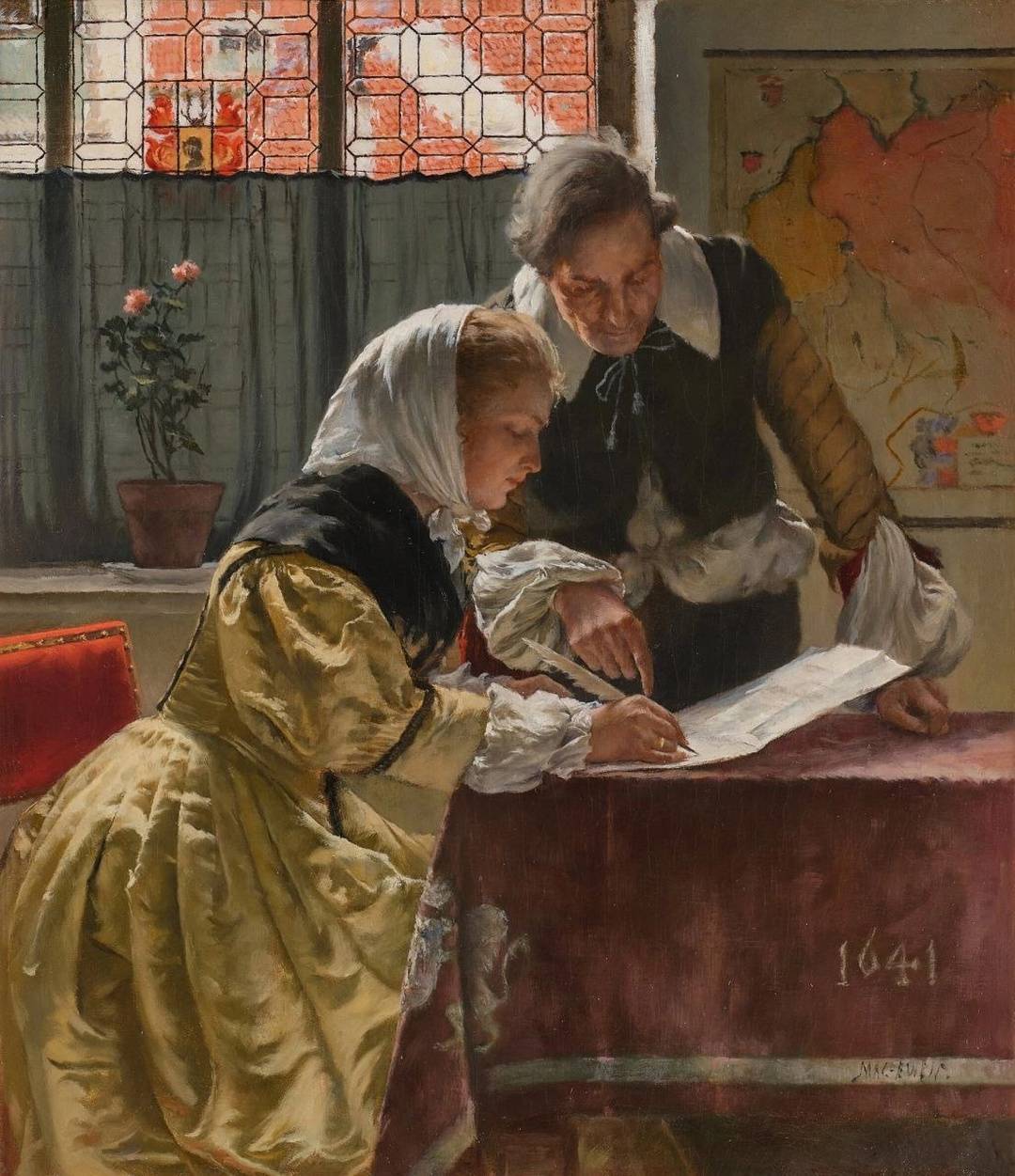
McEwen_the Notary
Notable Paintings
1. The Spinner (c. 1895) – A quintessential MacEwen work, depicting a woman spinning thread in a softly lit Dutch interior. The play of light on her apron and the wooden spinning wheel exemplifies his technical mastery.
2. The Letter" (1891) – A contemplative scene of a woman reading a letter by candlelight, evoking Vermeer’s iconic compositions.
3. A Dutch Interior (early 1900s) – A sunlit room with a woman in period dress, showcasing MacEwen’s skill in rendering architectural details and textiles.
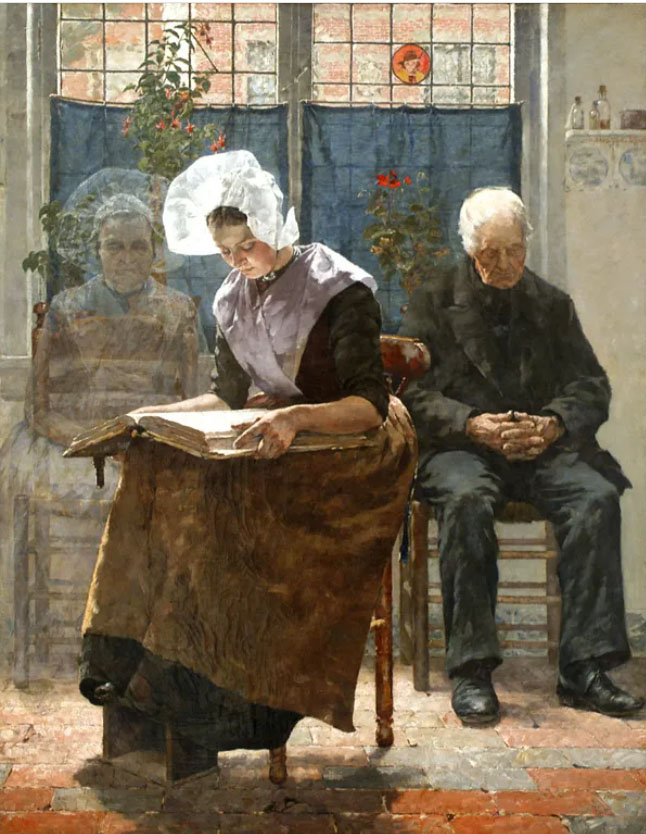
The Absent One On All Soul’s Day
Later Years and Legacy
Declining Recognition
By the early 20th century, modernist movements like Cubism and Fauvism began overshadowing academic realism. MacEwen’s traditional style fell out of fashion, and his name gradually faded from public consciousness. He continued painting but never achieved the lasting fame of some peers.
Rediscovery and Modern Appreciation
In recent decades, there has been renewed interest in 19th-century academic art. MacEwen’s works, once relegated to obscurity, are now sought after by collectors of American and European genre painting. Exhibitions focusing on Gilded Age art have occasionally featured his pieces, reintroducing him to a new audience.
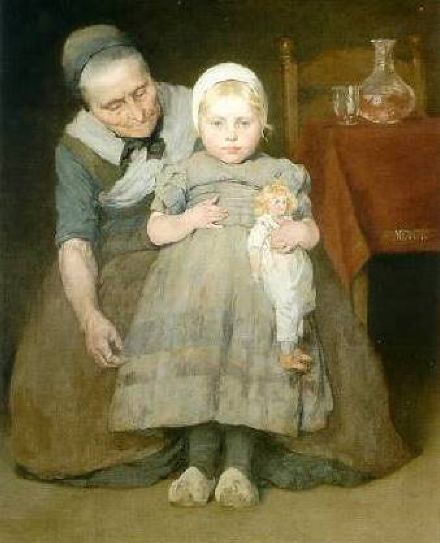
Grandmother And Child
Where to See His Work
Several museums hold MacEwen’s paintings, including:
- The **Art Institute of Chicago**
- The **Detroit Institute of Arts**
- The **Rijksmuseum (Netherlands)**
His works also appear in private collections and are occasionally auctioned at major houses like Sotheby’s and Christie’s.
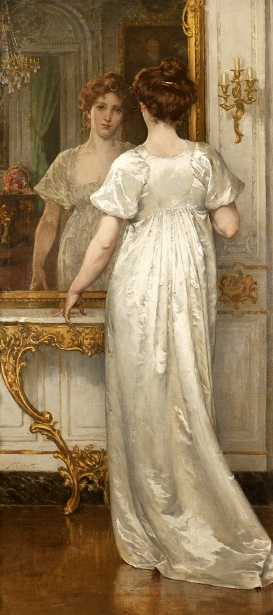
Conclusion: Why MacEwen Matters
Walter MacEwen’s art represents a bridge between European Old Master traditions and American realism. His ability to infuse ordinary moments with quiet grandeur places him among the finest genre painters of his era. While he may not be a household name, his legacy endures in the delicate interplay of light and shadow that defines his best works.
For art historians and enthusiasts, MacEwen remains a compelling subject—a reminder of the beauty in meticulous craftsmanship and the power of a single, perfectly rendered sunbeam.
Further Reading:
- *The Golden Age of American Academic Painting* (1981) by David B. Dearinger
- *American Painters in the Age of Impressionism* (1994) by Emily Ballew Neff
- Exhibition catalogs from the Art Institute of Chicago and the Rijksmuseum
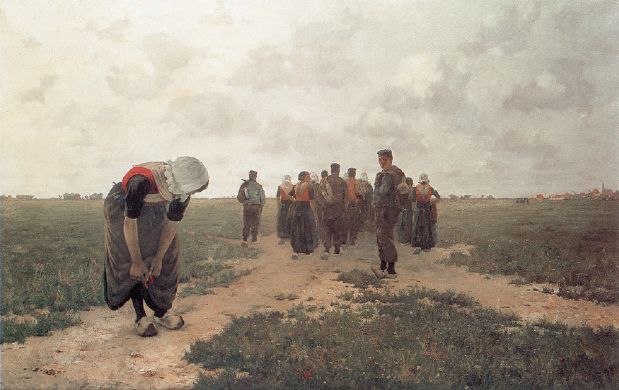
Returning From Work
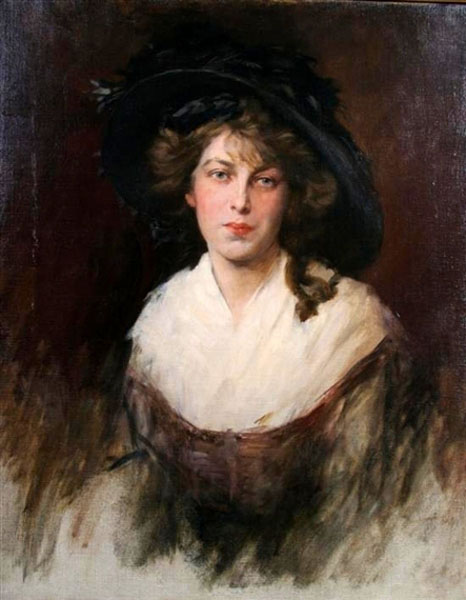
Lady In A Black Hat
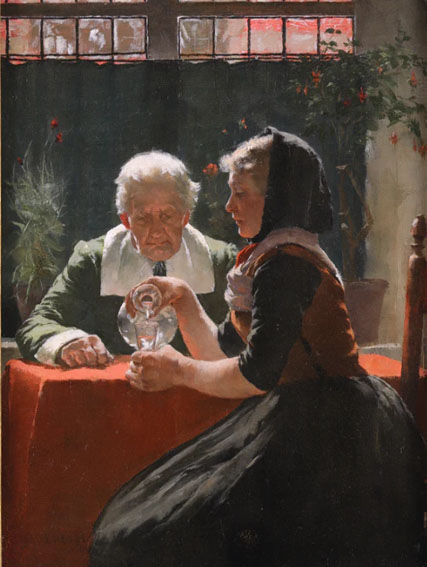
The Scribe's Office
|
